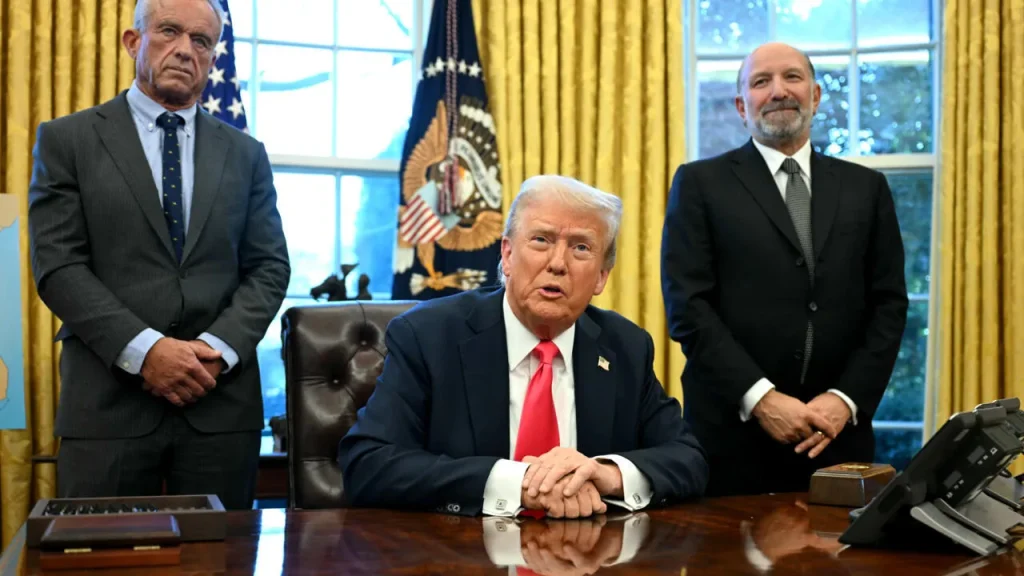Since returning to the White House on January 20, Donald Trump has signed a staggering 79 executive orders, impacting policies on trade, immigration, gender rights, and technology.
With a slim Republican majority in Congress, Trump has relied heavily on executive actions to push his agenda. According to the Federal Register, no U.S. president has issued so many executive orders so quickly since 1937. However, legal challenges have swiftly followed, with 16 of these orders facing lawsuits as of February 27, according to New York University’s Just Security.
Economic Policies and Trade
Trump has prioritized economic policy, signing 27 executive orders focused on trade, energy, and federal regulations. Twelve of these orders introduce tariffs, including potential levies on Canadian and Mexican goods and a 10% tax on Chinese imports. He has also declared a “national energy emergency,” reversing many green initiatives and promoting fossil fuel projects.
In line with his campaign rhetoric, Trump has taken a strong stance against renewable energy, calling the transition to green energy a “scam.” His orders have targeted electric vehicles, wind energy projects, and environmental regulations, advocating for increased oil drilling and plastic use over paper alternatives.
Diversity and Gender Policies
At least 14 of Trump’s orders directly address diversity and gender issues, rolling back protections for transgender individuals and limiting workplace programs focused on racial and gender equity. Notably, these policies redefine gender to only male and female categories and exclude transgender individuals from military service.
Additionally, Trump has restricted gender transition procedures for minors under 19 and prohibited government agencies from implementing affirmative action programs. Civil rights groups have already challenged many of these policies in court.
Immigration Crackdown
Immigration has been a major focus, with 15 executive orders tightening restrictions on refugees and birthright citizenship. One of his first orders temporarily halted refugee admissions, citing national security concerns, but a federal court has since blocked the policy.
Another controversial order seeks to reinterpret the 14th Amendment, challenging the automatic citizenship granted to individuals born on U.S. soil. Legal experts anticipate that this case could reach the Supreme Court.
Trump’s 77th order, signed on February 24, declared English the official language of the United States, sparking debate over its potential impact on bilingual communities.
Department of Government Efficiency (DOGE) Under Elon Musk
Six of Trump’s executive orders have strengthened the Department of Government Efficiency (DOGE), led by billionaire Elon Musk. One order calls for the “deconstruction of the overbearing and burdensome administrative state,” reinforcing Trump’s promise to streamline government operations.
Musk, whose companies have extensive government contracts, is now a central figure in Trump’s efforts to cut federal costs. Critics argue that his role presents potential conflicts of interest.
Health Policy Reversals
Trump has issued 13 executive orders focused on healthcare, including withdrawing the U.S. from the World Health Organization (WHO). He has also reversed Biden-era policies that protected access to abortion pills and reproductive health data privacy.
Other health-related orders reinstated military personnel dismissed for refusing COVID-19 vaccines and eliminated federal funding for schools with vaccine mandates.
Technology and Artificial Intelligence Regulations
Technology has also been a key focus, with Trump signing 10 executive orders related to artificial intelligence and cryptocurrency. His administration has tightened regulations on digital currencies while increasing federal oversight of AI advancements.
Musk has been a key advisor on these policies, raising ethical concerns about his influence given SpaceX and Tesla’s multi-billion-dollar government contracts.
Legal Battles and Political Fallout
Trump’s aggressive use of executive orders has sparked legal battles and protests nationwide. Civil rights organizations, environmental groups, and political opponents have mounted strong opposition, challenging many of these policies in court.
As Trump continues to reshape U.S. policy through executive actions, the coming months will determine how many of his orders withstand legal scrutiny.
For more political updates and in-depth analysis, visit Issue N Fact.

